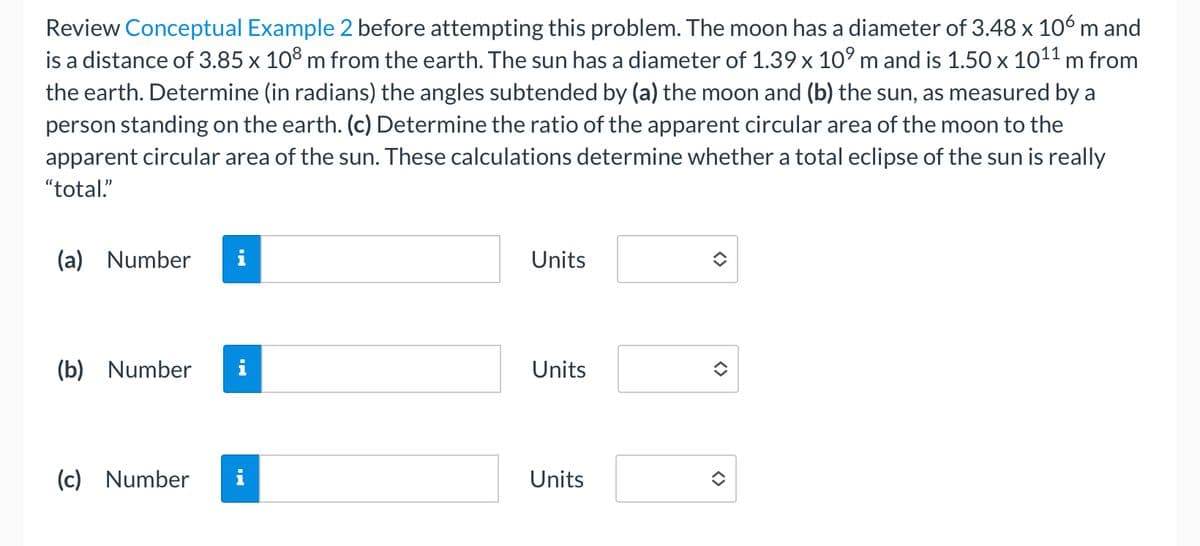Review Conceptual Example 2 before attempting this problem. The moon has a diameter of 3.48 x 106 m and is a distance of 3.85 x 108 m from the earth. The sun has a diameter of 1.39 x 10⁹ m and is 1.50 x 10¹¹ m from the earth. Determine (in radians) the angles subtended by (a) the moon and (b) the sun, as measured by a person standing on the earth. (c) Determine the ratio of the apparent circular area of the moon to the apparent circular area of the sun. These calculations determine whether a total eclipse of the sun is really "total." (a) Number i (b) Number i (c) Number i Units Units Units î ◊
Review Conceptual Example 2 before attempting this problem. The moon has a diameter of 3.48 x 106 m and is a distance of 3.85 x 108 m from the earth. The sun has a diameter of 1.39 x 10⁹ m and is 1.50 x 10¹¹ m from the earth. Determine (in radians) the angles subtended by (a) the moon and (b) the sun, as measured by a person standing on the earth. (c) Determine the ratio of the apparent circular area of the moon to the apparent circular area of the sun. These calculations determine whether a total eclipse of the sun is really "total." (a) Number i (b) Number i (c) Number i Units Units Units î ◊
Related questions
Question

Transcribed Image Text:Review Conceptual Example 2 before attempting this problem. The moon has a diameter of 3.48 x 106 m and
is a distance of 3.85 x 108 m from the earth. The sun has a diameter of 1.39 x 10⁹ m and is 1.50 x 10¹¹ m from
the earth. Determine (in radians) the angles subtended by (a) the moon and (b) the sun, as measured by a
person standing on the earth. (c) Determine the ratio of the apparent circular area of the moon to the
apparent circular area of the sun. These calculations determine whether a total eclipse of the sun is really
"total"
(a) Number
(b) Number
(c) Number
i
Units
Units
Units
<>
Expert Solution
This question has been solved!
Explore an expertly crafted, step-by-step solution for a thorough understanding of key concepts.
Step by step
Solved in 2 steps with 2 images
